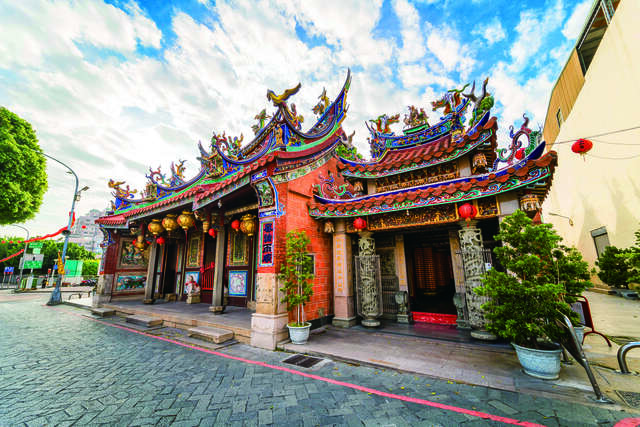Wan He Temple Introduction
Wanhua Temple was established in the 23rd year of the Kangxi era during the Qing Dynasty, advocated by Zhang Guo, the general of Dinghai in Zhejiang. It was funded and created by 12 surnames, including Zhang, Liao, Jian, Lai, Huang, Jiang, He, Yang, Dai, Liu, Chen, and Lin, and named Wanhua Temple. The "Mazu Cultural Museum" on the fifth floor of the Wanhua Cultural Building was established on October 24, 2004, under the guidance of the Council for Cultural Affairs by the Wanhua Cultural Foundation. This is the first private local cultural museum in Taichung City, showcasing five major areas: the historical trajectory of Nantun District, the glorious history of hemp, precious collections, the culture of Mazu in Nantun, and a creative art gallery. It is positioned as a local history and folk culture museum. The "Mazu Cultural Museum" is open for visits on the first and fifteenth days of the lunar calendar, as well as on weekends and holidays, with guided services provided by a volunteer team. The basement of the Wanhua Cultural Building is a restaurant; the first floor is an office, the second floor is a conference hall, the third floor is a library, the fourth floor is a museum of cultural relics, and the fifth floor is the Mazu Cultural Museum. The building faces the courtyard of Wanhua Temple and is backed by the Liutoudian Creek, towering majestically with an elegant environment. An additional floor has been built on top of the fifth floor as a "Viewing Tower," which offers a view of the beautiful scenery of Dadu Mountain to the west, the urban area of Taichung to the east, and the old streets of Nantun, presenting a poetic landscape. With a long history and vibrant worship, Wanhua Temple still retains the unique and nearly 200-year-old folk temple fair activities featuring the "Character Surname Opera," which is a significant cultural event in Taiwan. The performances of the character surname opera began on the 21st day of the third month in the fifth year of the Daoguang era (AD 1825). The first day features Zhangzhou opera, the 22nd features Cantonese opera (including Chaozhou, Jiaying, Huizhou, etc.), the 24th features Quanzhou opera, the 25th features Tingzhou opera, followed by various surname operas, god-worshipping operas, and soldier operas, continuing for one to two months, and have been sustained throughout the generations, becoming an important traditional folk activity in the region.






































